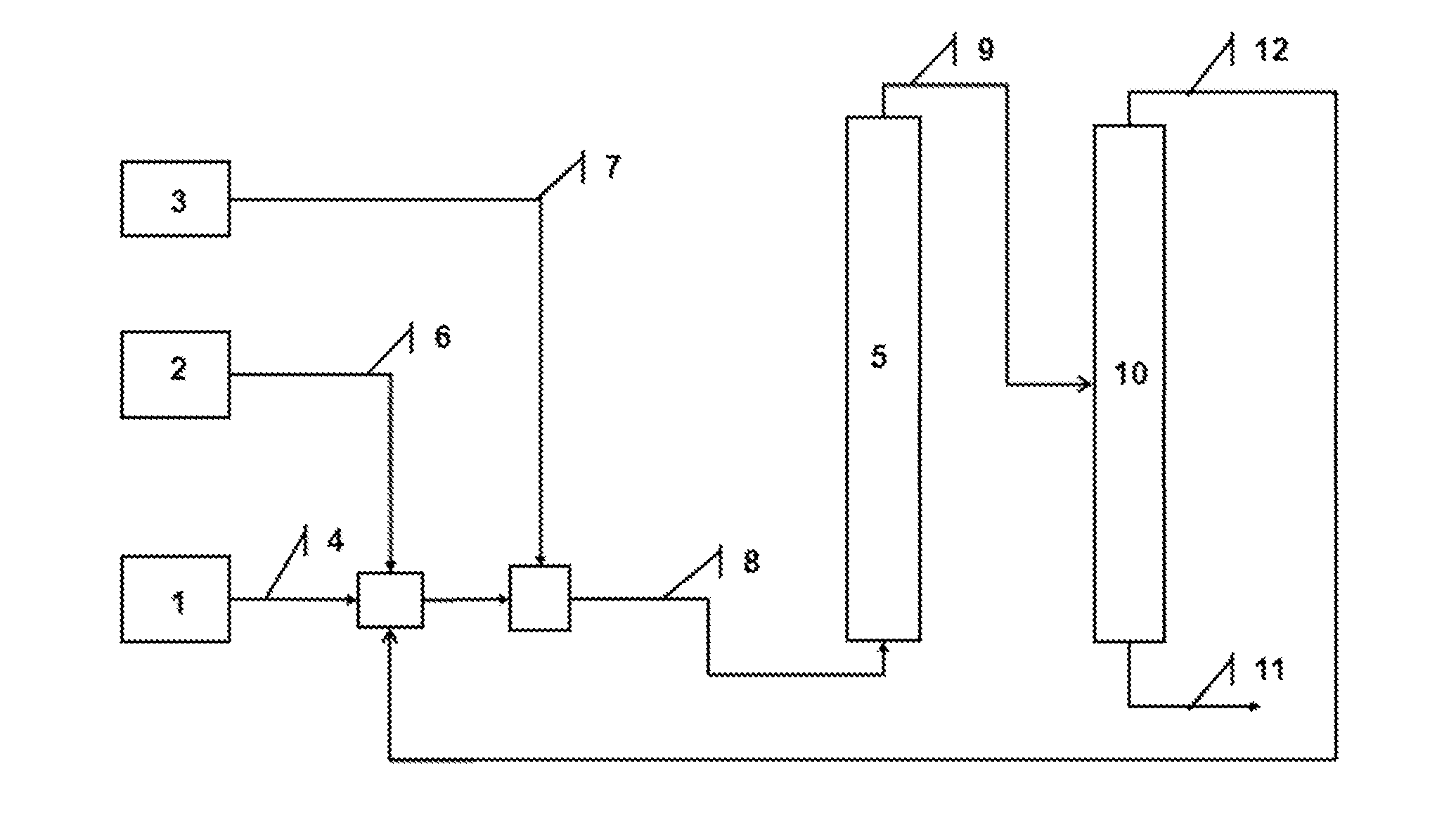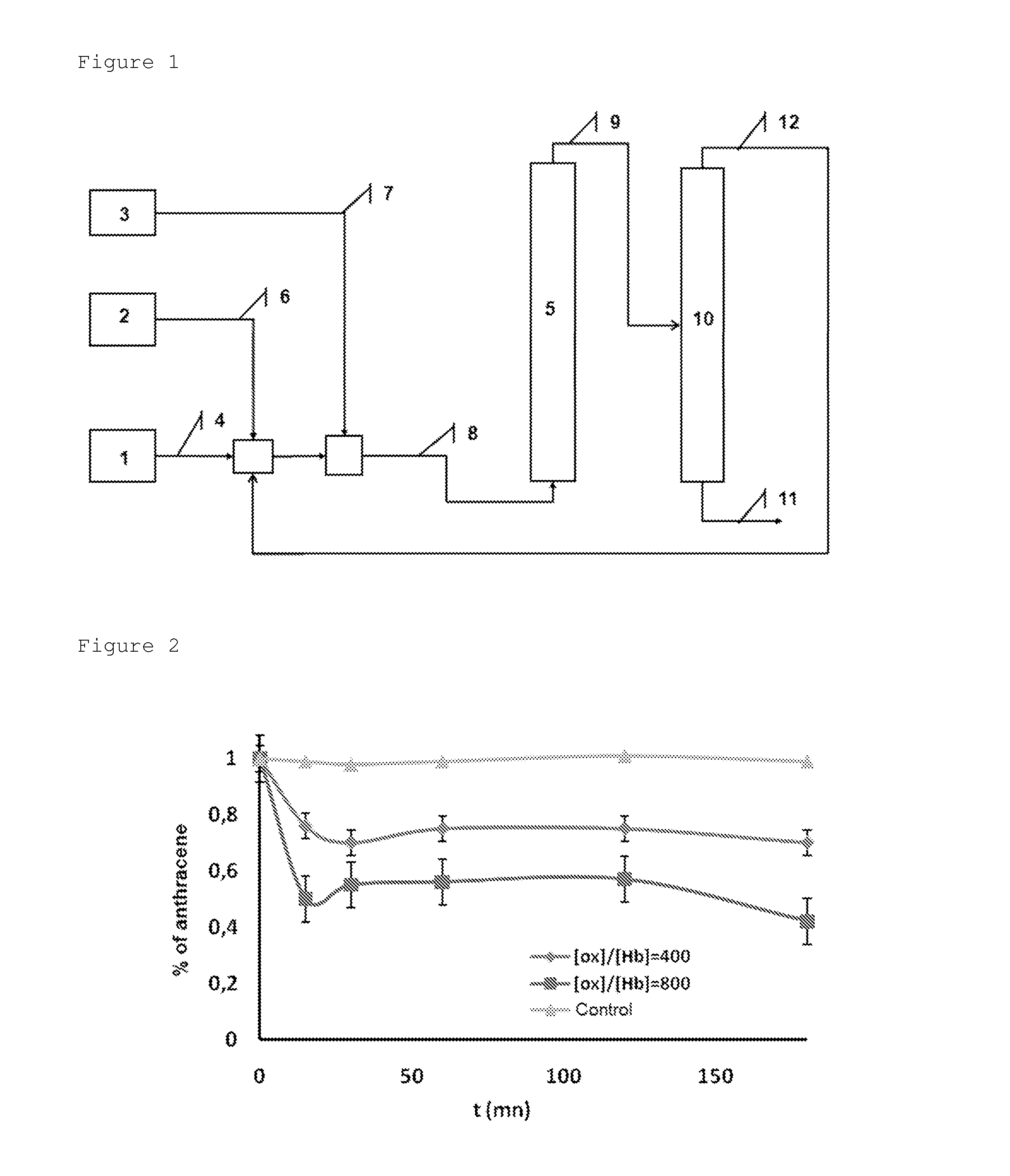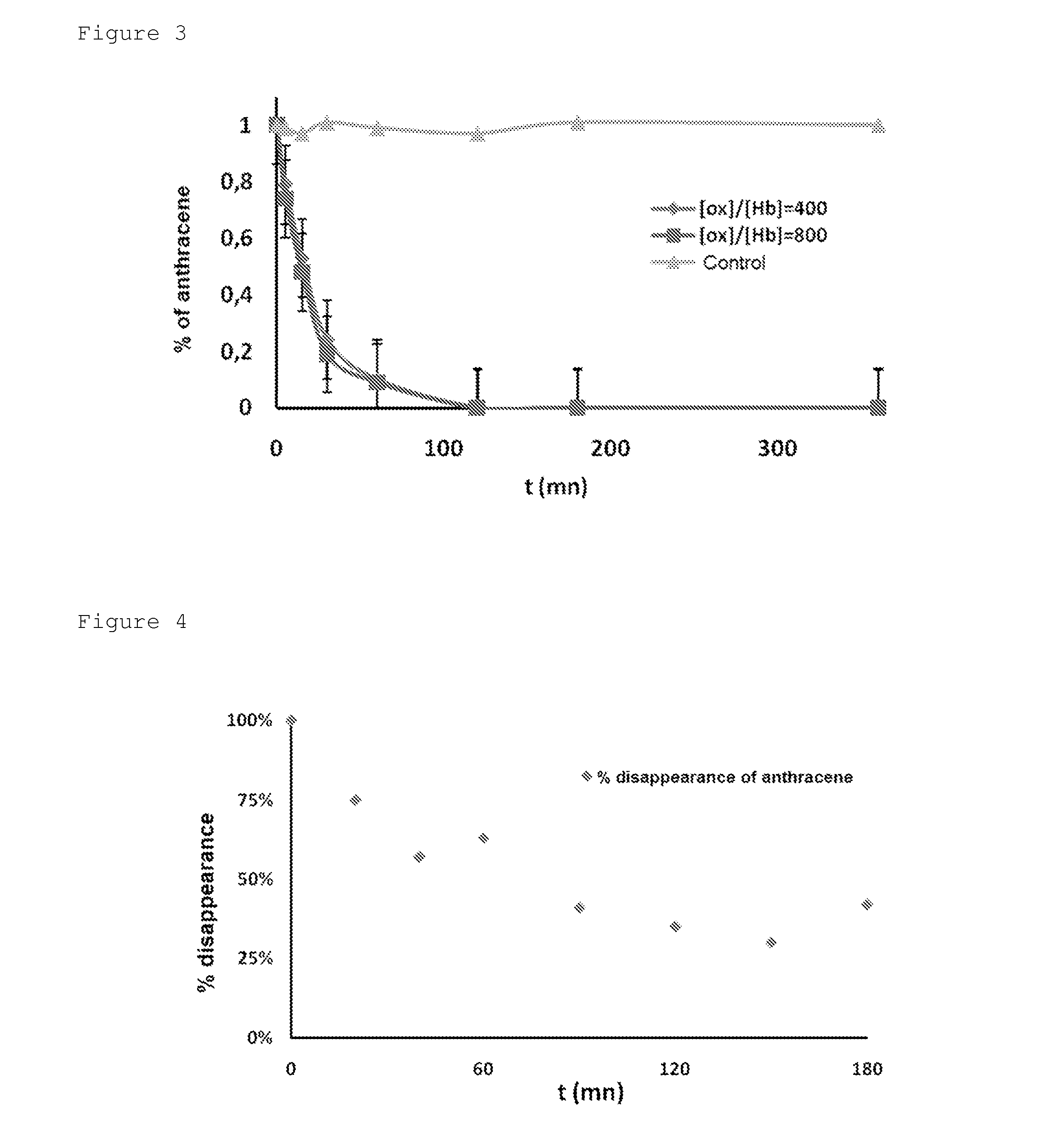Process for purifying aromatic extracts containing aromatic polycyclic compounds
a technology of aromatic polycyclic compounds and purification process, which is applied in the direction of hydrocarbon oil treatment, hydrocarbon refining with oxygen compounds, hydrocarbons, etc., can solve the problems of increasing the risk of infection, reducing the immune system response, and chrysene and benzo(b)fluoranthene are known to be particularly toxic, etc., to reduce the content of polycyclic aromatic hydrocarbons and reduce the viscosity of mixtures , the effect of low cos
- Summary
- Abstract
- Description
- Claims
- Application Information
AI Technical Summary
Benefits of technology
Problems solved by technology
Method used
Image
Examples
example 1
[0031]The aim of this example is to describe the preparation of a haemoprotein immobilized on divided solid particles by two preparation methods, the batch method for which the haemoprotein is absorbed into the solid particles and the continuous method consisting of flushing a bed of divided solid particles with a solution of haemoprotein. The batch method produces a haemoprotein X immobilized on silica, hereafter referred to as haemoprotein X.
[0032]1 g of Aerosil® 200 silica (Degussa), 200 mg of bovine haemoglobin (3.1 μmol) and 10 mL of phosphate buffer solution (pH 6, 50 mM) are introduced into a container suitable for a centrifuge. The mixture is stirred at 0° C. for 5 minutes, then 30 mL of acetone is added dropwise over a period of 10 minutes. Stirring of the mixture is continued for 30 minutes at 0° C., followed by centrifugation at 3000 rpm for 10 minutes. The solid residue collected in the bottom of the test tube is washed with 10 mL of phosphate buffer (pH 6) then centrifu...
example 2
[0034]In the present example, the effect of the nature of the solvent on the degradation of anthracene, a model PAH molecule, is compared. The degradation of anthracene was compared in the presence of an oxidizing agent, either in solution in furfural or in solution with methyl ethyl ketone (MEK) under the same reaction conditions. Two mother liquids containing approximately 100 ppm of anthracene were therefore prepared in furfural and in MEK respectively. These solutions were used for preparing standard solutions for measuring the anthracene in the solutions degraded by means of HPLC-UV (λ=251.1 nm). 16 ml of solvent (furfural or MEK), then 4 ml of the mother liquid of anthracene (i.e. an anthracene concentration of 20 ppm in the mixture corresponding to the level of concentrations of the PAHs in an industrial solution) and finally, 800 mg of supported haemoprotein are introduced into 100 ml flasks placed under magnetic stirring. After homogenization of the mixture thus obtained, 2...
example 3
[0036]In the present example, the continuous degradation of anthracene in the presence of a haemoprotein Y described in Example 1 is described. The column, filled with haemoprotein Y is continuously supplied at a flow rate of 1 ml / minute, with a solution of MEK containing 150 ppm of anthracene (ANT) and tert-butyl peroxide (tBuOH), the [tBuOH] / [ANT] molar ratio being fixed at 300. By comparing the anthracene contents measured between the inlet and the outlet of the column by GC-MS (coupling of gas chromatography / mass spectrometry), the quantity of degraded anthracene is determined. The graph corresponding to the disappearance of the anthracene as a function of time is given in FIG. 4.
PUM
| Property | Measurement | Unit |
|---|---|---|
| temperature | aaaaa | aaaaa |
| size | aaaaa | aaaaa |
| size | aaaaa | aaaaa |
Abstract
Description
Claims
Application Information
 Login to View More
Login to View More - R&D
- Intellectual Property
- Life Sciences
- Materials
- Tech Scout
- Unparalleled Data Quality
- Higher Quality Content
- 60% Fewer Hallucinations
Browse by: Latest US Patents, China's latest patents, Technical Efficacy Thesaurus, Application Domain, Technology Topic, Popular Technical Reports.
© 2025 PatSnap. All rights reserved.Legal|Privacy policy|Modern Slavery Act Transparency Statement|Sitemap|About US| Contact US: help@patsnap.com



